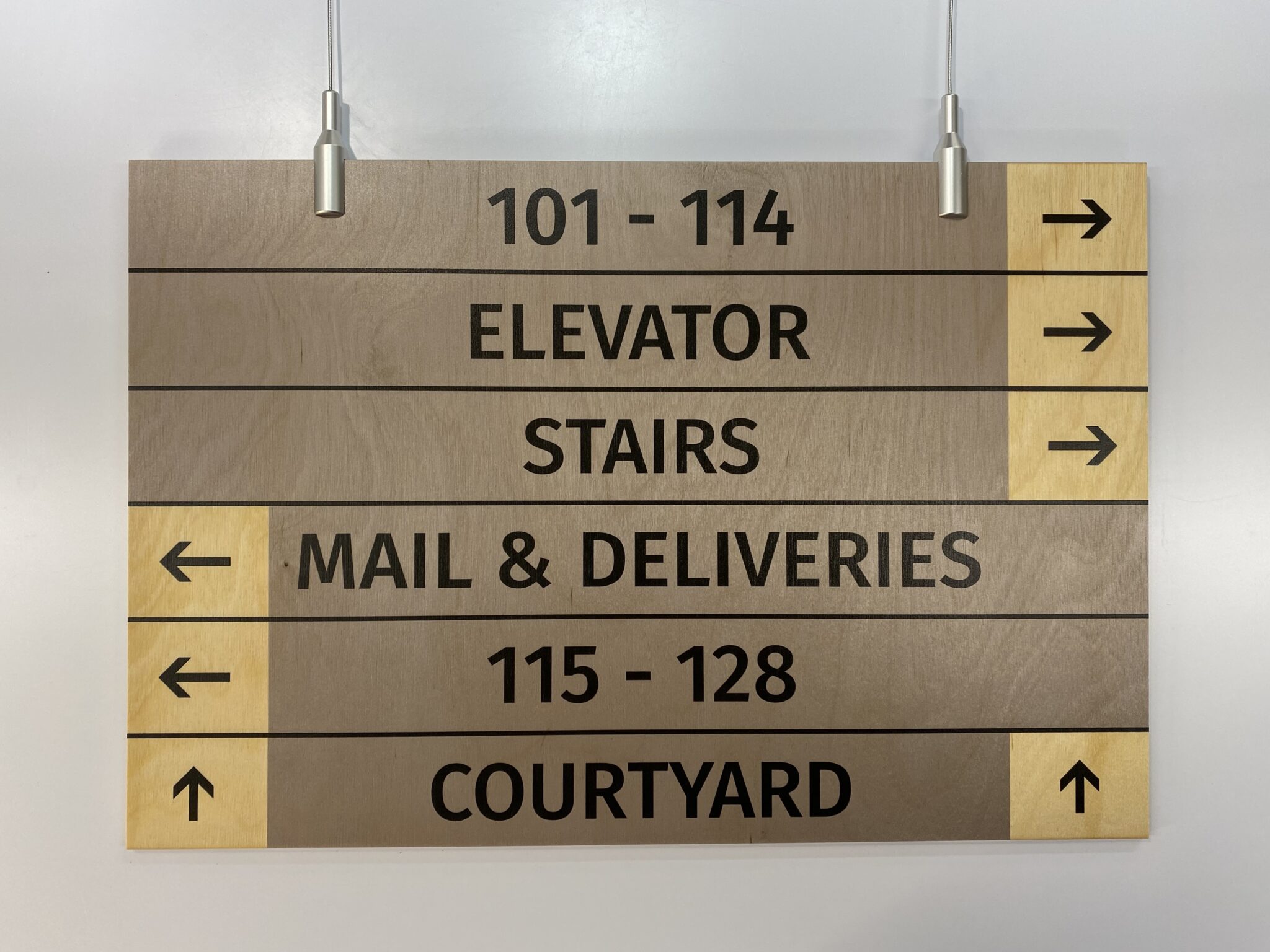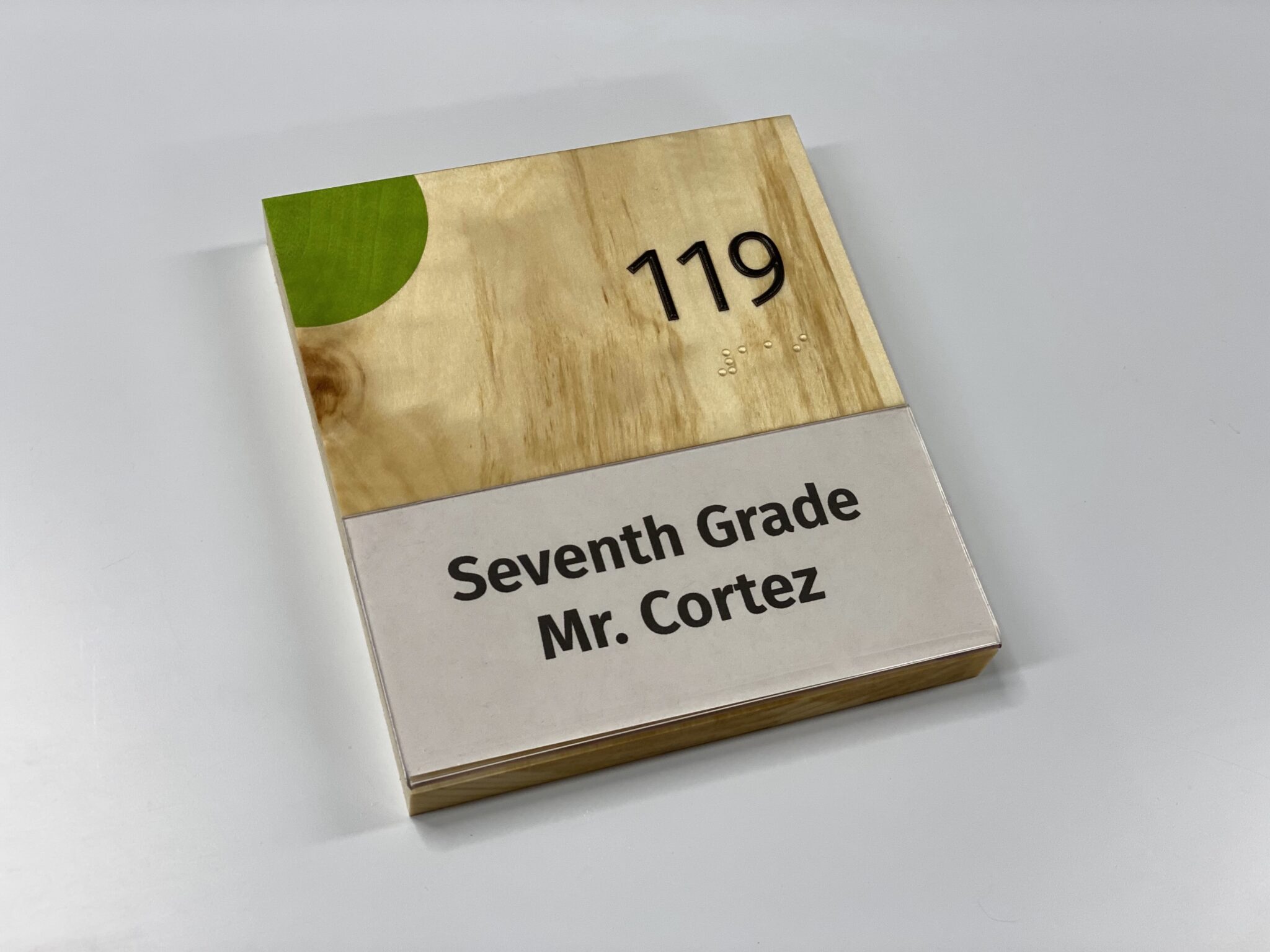DIRECTIONAL SIGNAGE
Within a wayfinding system, directional signage points the way to help people navigate.
Directional sign examples:
- Restroom sign with an arrow indicating direction of nearest handicapped accessible restroom
- Ceiling mounted sign indicating where the lobby, cafeteria and various medical departments are located within a hospital
- Company directory in a building lobby that lists where business offices are located within the facility
Directional signage tips:
- Place directional signs at decision points, such as when to turn or continue straight
- Place directional signs along a path every 20 to 40 feet to let people know they are going the correct way
- Paths should have a clear beginning, middle and end and the distance between points should be clear
- Some directional signs must meet ADA visual character requirements as listed in the 2010 U.S. Dept. of Justice Standards for Accessible Design (SAD)
- Select font style and size so users can quickly read content






